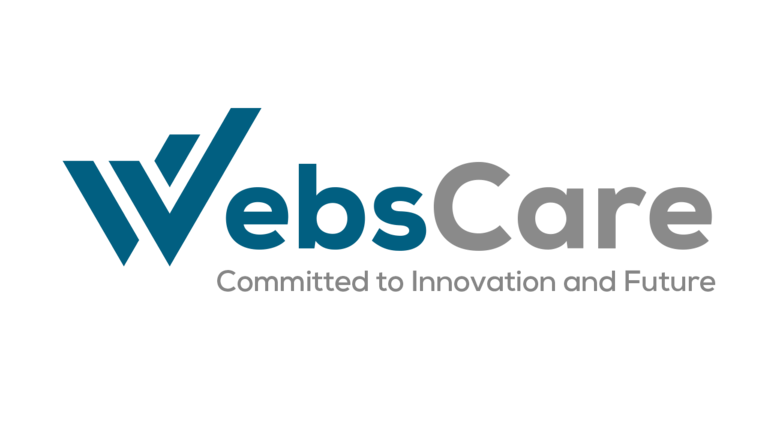Creating a mobile app is a great way to reach users and offer value, but if you want your app to be financially successful, you need to think about how it will make money. With millions of apps available on both the Apple App Store and Google Play Store, having a smart monetization plan is more important than ever. With approximately 2 million apps on the Apple App Store and nearly 3.3 million on the Google Play Store, the mobile app market is more competitive than ever. To stand out and succeed, app developers and publishers must stay updated on the latest monetization strategies. In this post, our WebsCare research team will explore some effective and proven methods to help you generate more revenue from your app.
Looking for best app development services in Pakistan? Get the best solutions with our two premium options.
Top 9 Mobile APP Monetization Strategies for Maximum Revenue
Here is the list of 9 mobile app monetization techniques you need to know, mentioned as
In-App Advertising
In-app advertising involves displaying ads to users while they interact with a mobile application. These ads come in various formats including banner ads, interstitials, video ads, native placements and text-based ads. This monetization method continues to be one of the most lucrative strategies in the mobile app industry. According to recent projections, global in-app advertising spend is expected to hit $390 billion by 2025. This market is forecasted to grow steadily with a compound annual growth rate (CAGR) of 8.17% between 2025 and 2029, reaching an estimated value of $533.90 billion by 2029.
In 2025 alone, the average ad spend per mobile internet user is projected at $59.23 with the United States leading global expenditures at a staggering $147.50 billion. These trends emphasize the rising importance of in-app advertising as a powerful tool for both monetization and audience outreach in the digital industry.
In-App Purchases
In-App Purchases (IAP) involve users purchasing virtual goods, premium content or additional features directly within an app. This model is particularly popular in gaming apps (like PUBG and FreeFire) where players buy virtual currencies like coins or gems to enhance their experience, unlock new levels, characters or access special features. Plus, apps can offer subscriptions to premium content such as exclusive updates or advanced functionalities.
The main advantage of IAP is its scalability, as developers can generate recurring revenue while continuously offering new purchasable items or content which helps to keep users engaged. However, for this strategy to be effective, a careful balance between free and paid content is essential; if too much is locked behind paywalls, users may feel alienated but if too little is offered as premium, the potential for monetization may be undercut.
Freemium Model
Freemium Model is a popular monetization strategy where a mobile app offers users a free version with basic features while providing the option to upgrade to a premium version that unlocks advanced features or content. The strategy works by attracting a broad user base through the free version, creating a solid foundation of engaged users. From there, the goal is to upsell the premium version by offering additional value that justifies the cost such as enhanced functionality, ad-free experiences or exclusive content.
The advantage of this model lies in its ability to attract a large audience with the potential for high conversion rates if users find the premium features compelling enough to pay for. However, a significant challenge is that conversion rates can be relatively low unless the app’s upsell tactics such as offering time limited trials, discounts or unique value propositions, are carefully crafted to encourage users to make the switch to paid subscriptions.
How Mobile Apps Are Transforming E-commerce in Pakistan? Let’s read more about it.
Subscription-Based Model
The Subscription-Based Model involves users paying a recurring fee typically monthly or annually for continuous access to premium content or features within an app. This model is especially effective for apps like news platforms, streaming services or health and fitness apps that offer ongoing value through fresh content, media or services. The primary advantage of this approach is that it generates predictable, recurring revenue, making it easier for app developers to forecast income and maintain a stable business model. It also fosters long-term user relationships by encouraging regular interactions with the app. However, a potential downside is that the model requires frequent updates and new content to keep users engaged and ensure they feel that the subscription fee is justified which can be resource-intensive and require constant innovation.
Sponsorship and Partnership Deals
Sponsorship and partnership deals involve collaborating with brands or businesses that pay you to show their content, products or services within your app. This monetization strategy can provide a unique revenue stream by integrating third-party advertisements, special offers or branded content that aligns with your app’s niche and user base. When done correctly, sponsorships and partnerships can enhance the user experience by offering relevant, non-intrusive promotions that add value, rather than detracting from the app’s core functions. However, the success of this approach depends heavily on effective business development and networking to secure the right partnerships which can require significant time and effort. Plus, it is important to ensure that the sponsored content doesn’t negatively impact user satisfaction or the integrity of the app.
Affiliate Marketing
Affiliate marketing is a mobile app monetization strategy where app developers promote third-party products, services or apps within their own application and earn a commission for each successful referral, lead or sale generated through their affiliate links. This model is commonly used in content-driven or utility apps where developers can naturally integrate product recommendations such as linking to e-commerce items or suggesting partner apps relevant to the user base. One of the major advantages of affiliate marketing is its potential for passive income, as users can continue to generate revenue even after the initial promotion has been set up.
Plus, when implemented thoughtfully, affiliate offers can be highly targeted to match the interests or behaviors of specific user segments, leading to higher conversion rates. However, this strategy demands a high level of trust and transparency; if users feel misled or overwhelmed by promotions, it can damage the app’s reputation. Therefore, maintaining credibility while clearly disclosing affiliate relationships is important for long-term success.
Data Monetization
Data Monetization (Ethically & Legally) involves collecting, analyzing and selling anonymized user data such as app usage patterns, location trends or behavioral insights to third parties like advertisers, researchers or market analysts. This strategy can be highly lucrative because businesses are willing to pay significant amounts for quality data that helps them make informed decisions. One of its biggest advantages is that it generates revenue in the background without disrupting the user experience unlike ads or paywalls. However, it comes with serious responsibilities: developers must strictly adhere to privacy regulations like the GDPR in Europe or CCPA in California, ensuring that any data collected is anonymized and user consent is clearly obtained. Transparency is key, users must be informed about what data is being collected and how it will be used.
Crowdfunding and Donations
Crowdfunding and Donations as a monetization strategy involve soliciting financial support directly from your users through platforms such as Patreon, Ko-fi or in-app donation features, which can be particularly advantageous for indie developers or niche apps that have built a dedicated, engaged community. This approach not only provides an alternative revenue stream that builds community loyalty by making users feel directly invested in the app’s success but also tends to promote a sense of shared ownership and commitment.
White-Labeling Your App
White-labeling your app involves developing a core application that can be customized, rebranded and sold to other businesses who want to offer similar functionality under their own brand name. This strategy is particularly effective for B2B apps such as booking platforms, e-learning solutions, or fitness tracking systems where different companies may need the same core features but with personalized branding and UI. The main advantage is that it allows you to monetize a single codebase multiple times, offering a high-margin revenue model without having to build entirely new apps for each client.
However, white-labeling is best suited to apps with a clear and universal use case, making it a niche approach. It also requires robust architecture, modular design and strong post-sale support, as clients may need help with customization, updates and technical maintenance.
Why Mobile Apps are essential for business growth? Let’s read more about it.
Conclusion
Today, just creating a good mobile app isn’t enough; it is also important to know how to earn money from it. With millions of apps competing for user attention on the Apple App Store and Google Play Store, developers must strategically implement monetization models that not only generate revenue but also enhance user experience. Whether you are an indie developer, a startup founder or a business with an established user base, choosing the right monetization strategy can significantly impact your app’s success. In this article, the WebsCare research team breaks down nine most effective and proven mobile app monetization strategies from in-app advertising and purchases to subscriptions, affiliate marketing and beyond to help you turn your app into a profitable venture.

